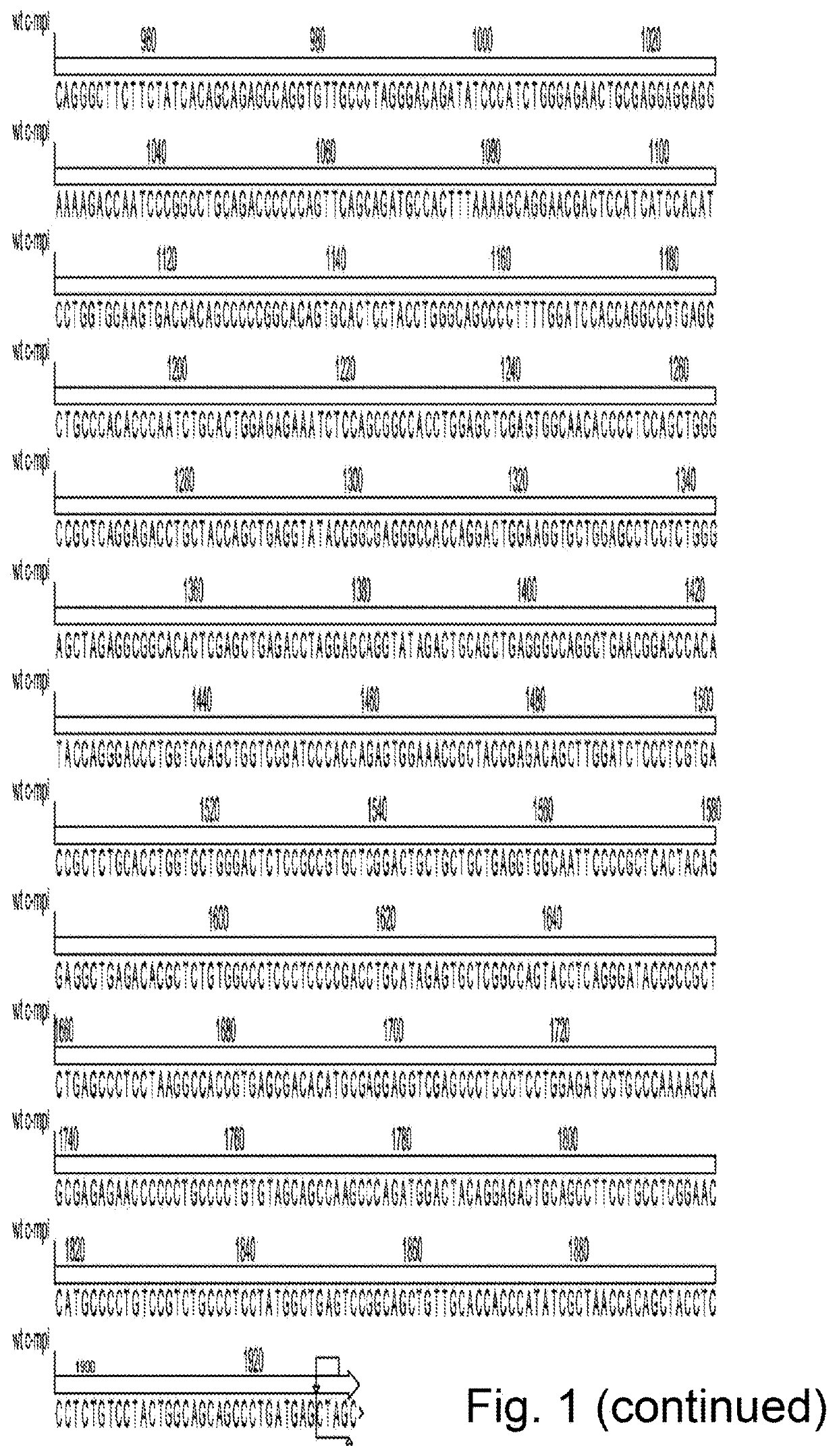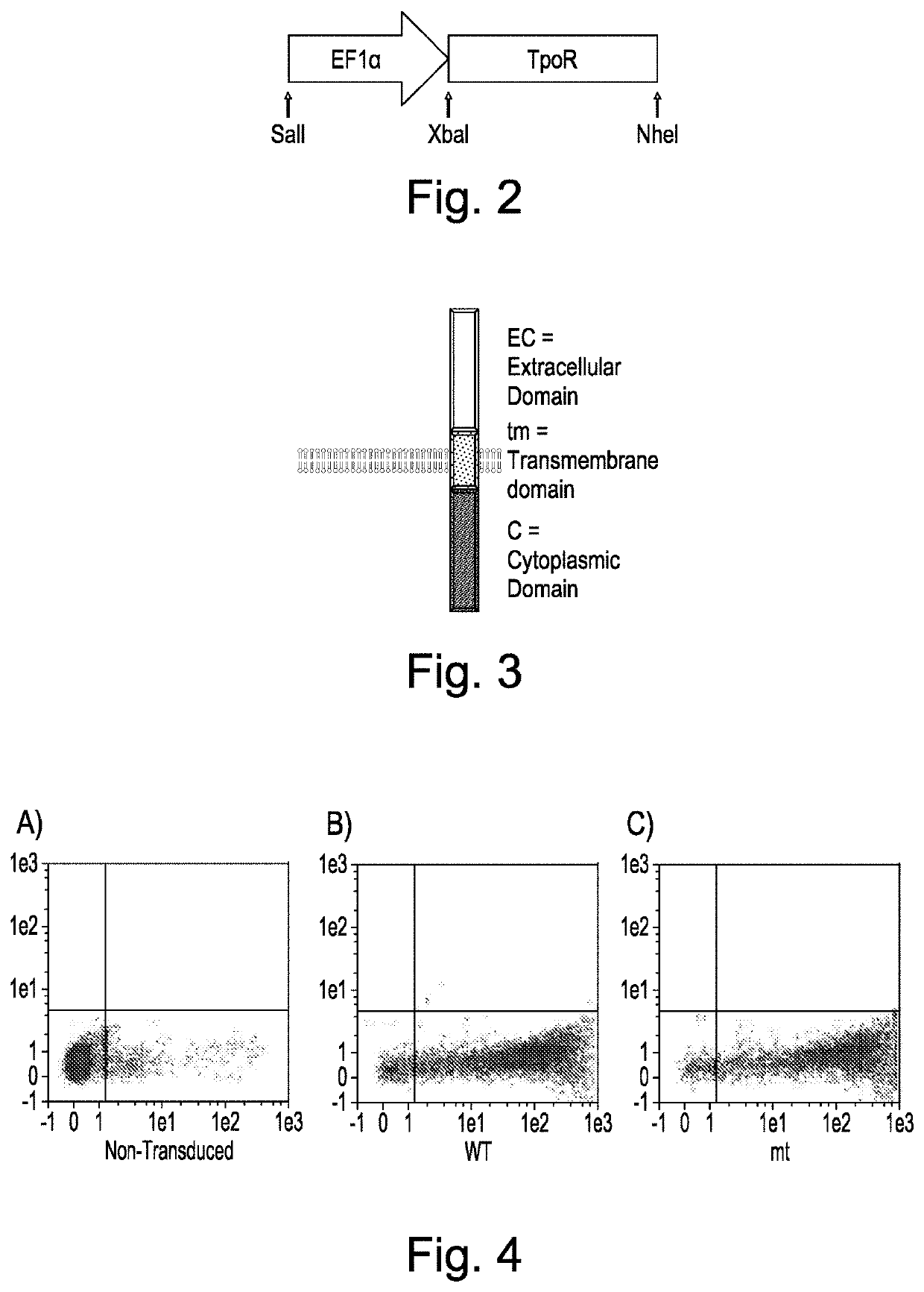Cells expressing recombinant growth factor receptors
a technology of growth factor receptor and recombinant growth factor, which is applied in the direction of viruses/bacteriophages, genetically modified cells, animal/human proteins, etc., can solve the problems of limited t-cell technology, many patients are not healthy enough to be able to withstand the rigours of this treatment regimen, and many patients are not in a healthy state to achieve the effect of low toxicity, and reducing the risk of cancer
- Summary
- Abstract
- Description
- Claims
- Application Information
AI Technical Summary
Benefits of technology
Problems solved by technology
Method used
Image
Examples
example 1
n of T-cells expressing rGFR
Materials and Methods
[0132]Construct design—The entire human TpoR nucleic acid sequence, or mutant truncated variant lacking the final five N-terminal amino acids and described in Saka et al. 2013 The constructs were cloned into pSF.Lenti (Oxford Genetics) via an Xbal and Nhel site. The CD34 fusion receptor was generated by fusing the extracellular domain of CD34 directly to the transmembrane and cytoplasmic domain of the human TpoR. The HGHR, PrIR and GCSFR fusions were generated by fusing the HGHR, PrIR or GCSFR cytoplasmic domains respectively directly to the extracellular and transmembrane domain of the TpoR. The F104S mutant was generated by cloning in a fragment of the TpoR via Xbal and Xhol restriction sites. All fragments and constructs were codon optimised and gene synthesised by Genewiz.
[0133]Lentiviral Production—Lentiviral production was performed using a three-plasmid packaging system (Cell Biolabs, San Diego, USA) by mixing 10 μg of each pla...
PUM
| Property | Measurement | Unit |
|---|---|---|
| TM | aaaaa | aaaaa |
| nucleic acid sequence | aaaaa | aaaaa |
| Tm | aaaaa | aaaaa |
Abstract
Description
Claims
Application Information
 Login to View More
Login to View More - R&D
- Intellectual Property
- Life Sciences
- Materials
- Tech Scout
- Unparalleled Data Quality
- Higher Quality Content
- 60% Fewer Hallucinations
Browse by: Latest US Patents, China's latest patents, Technical Efficacy Thesaurus, Application Domain, Technology Topic, Popular Technical Reports.
© 2025 PatSnap. All rights reserved.Legal|Privacy policy|Modern Slavery Act Transparency Statement|Sitemap|About US| Contact US: help@patsnap.com



